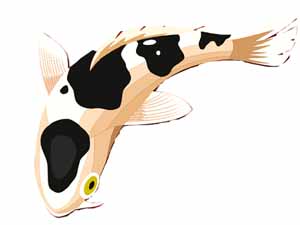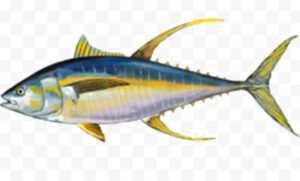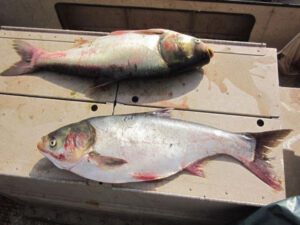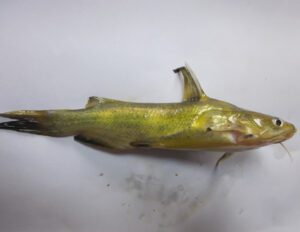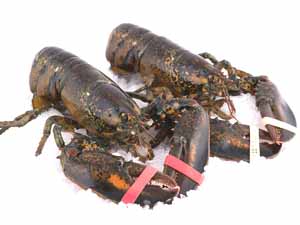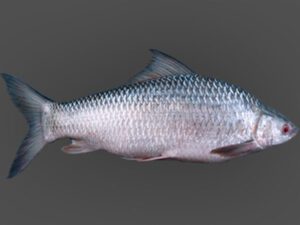The Mandarin fish is a species of temperate perch which is also known as Siniperca chuatsi or Chinese perch. It is native to the Amur and Yangtze basins, and other lakes in China.
It is one of the oldest fish species, and known from time immemorial. It became extremely popular in the Tang Dynasty, and many poets eulogised about it’s color and taste. But culture of this fish didn’t begin until late in the twentieth century.
Experimental farming of Mandarin fish began in the 1950s, when wild-caught seeds were used (farmers found that it was an excellent species for farming).
Some Chinese farms conducted research on seed production later, but the fish survived only for about 10-15 days. And finally the Suzhou Municipal Farm in Jiangsu Province, produced some Mandarin fish in 1975.
Those fish on average reached an average size of around 375 grams each through induced breeding. From then onwards, the farming of this species under controlled conditions has become more and more popular.
Today the Mandarin fish are found naturally in China, Japan, Vietnam and Russia. It is very popular in north-eastern Asian countries. Read some more information about this fish species below.
Mandarin Fish Characteristics
Back of the Mandarin fish is yellow, green or brown, with many irregular black spots and patches. Mouth of this fish is big, as compared to their body size. Their body is compressed, and have small round scales.
Their lower jaw is protruding, and the upper jaw is extended behind the eyes. They have well developed dorsal fins with mainly hard spines located anteriorly, and extended posteriorly with round tips.
Anal, pectoral and tail fins are of round shaped. And there are 3 sharp spines anterior to both abdominal and anal fins.
Average body length of the Mandarin fish can reach up to 70 cm. And the highest recorded weight of this fish is 10.2 kg. Photo and info from FAO and Wikipedia.
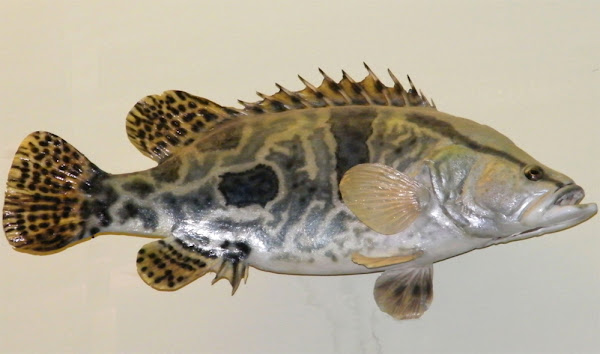
Diet
The Mandarin fish is a specialized feeder on other fishes. This fish generally eat those fishes which see poorly in low light.
Breeding
The Mandarin fish require specific environment for breeding. They don’t reproduce until the temperature exceeds 21 °C. The optimum temperature for breeding is 26-30 °C.
The breeding season can vary due to the different climatic conditions from the south to the north of China.
Breeding occurs between March and August in the south, it occurs between May and August in the central part. Season between June and July is the most active period.
Spawners gather densely at the river bend or confluence during the breeding season, where there is an enhanced water current.
Spawning takes place only at night in a flowing water environment. Spawning generally lasts for 3-6 hours, but can vary occasionally and may last 24 hours.
It will take around 2 years for the females to become mature. But the males take only one year. The females generally lay 30,000 to 2,00,000 eggs per spawning depending on their size.
Uses
The Mandarin fish is used mainly for food. It is commercially cultivated in China.
Special Notes
The Mandarin fish are an inhabitant of rivers, some of which can become quite turbid in the rainy season.
They are commercially a very important fish species. And it is very popular as food fish in it’s native area, and has been farmed widely in it’s native range since the twentieth century.
However, review full breed profile of the Mandarin fish in the table below.
| Name | Mandarin |
| Kingdom | Animalia |
| Phylum | Chordata |
| Class | Actinopterygii |
| Order | Perciformes |
| Family | Percichthyidae |
| Genus | Siniperca |
| Species | S. chuatsi |
| Binomial Name | Siniperca chuatsi |
| Other Names | Also known as Siniperca chuatsi or Chinese perch |
| Breed Purpose | Mainly food |
| Special Notes | Inhabitant of rivers, commercially very important fish species, very popular as food fish, farmed widely in the native range, raised mainly for food |
| Weight | Can reach up to 10.2 kg |
| Breeding Method | Natural |
| Climate Tolerance | Native climates |
| Body Color | Back is yellow, green or brown with many irregular black spots and patches |
| Rarity | Common |
| Availability | Asia |

